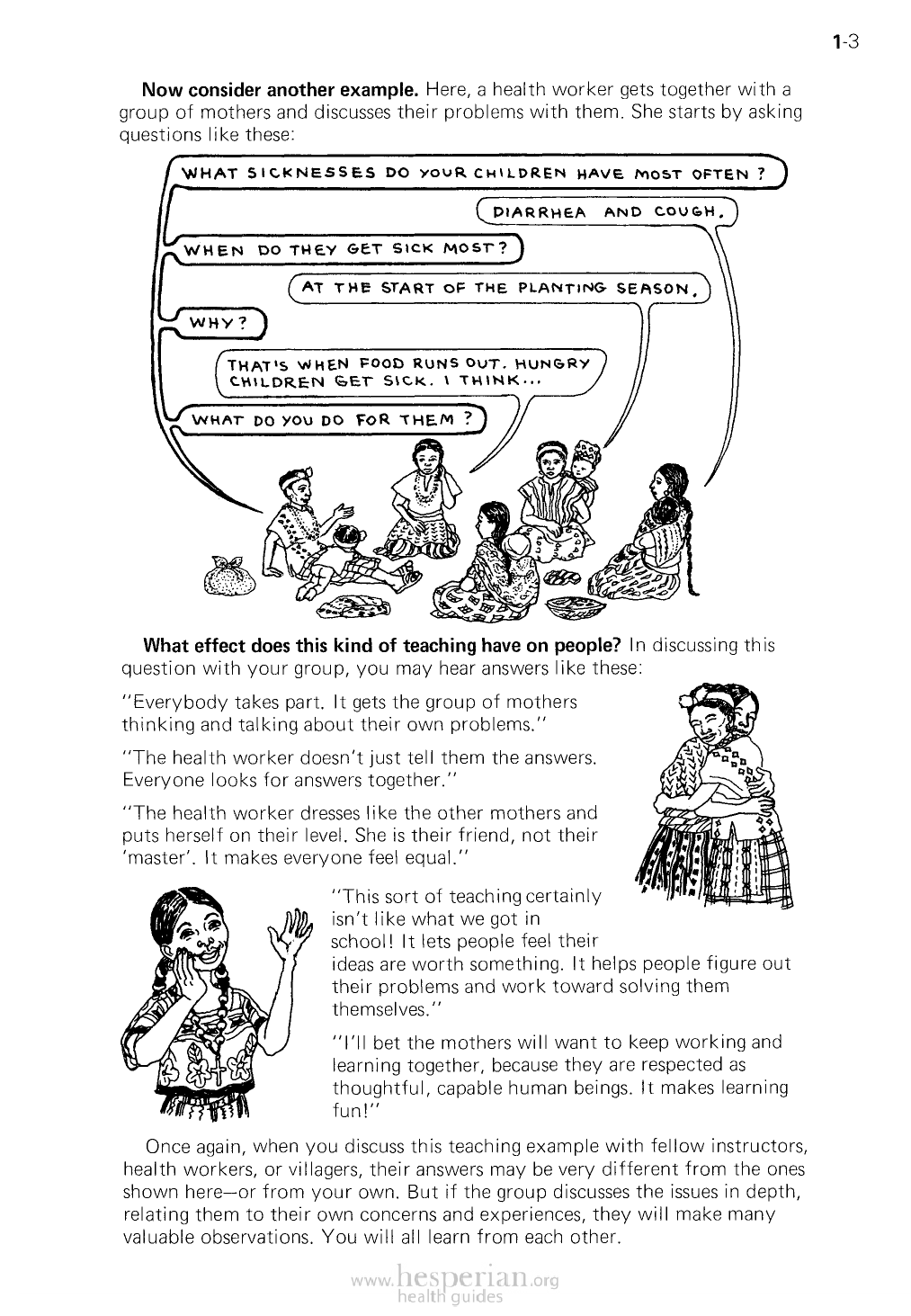
Now consider another example. Here, a health worker gets together with a
group of mothers and discusses their problems with them. She starts by asking
questions like these:
1-3
What effect does this kind of teaching have on people? In discussing this
question with your group, you may hear answers like these:
“Everybody takes part. It gets the group of mothers
thinking and talking about their own problems.”
“The health worker doesn’t just tell them the answers.
Everyone looks for answers together.”
“The health worker dresses like the other mothers and
puts herself on their level. She is their friend, not their
‘master’. It makes everyone feel equal.”
“This sort of teaching certainly
isn’t like what we got in school!
It lets people feel their ideas
are worth something. It helps people figure out
their problems and work toward solving them
themselves.”
“I’ll bet the mothers will want to keep working and learning
together, because they are respected as thoughtful,
capable human beings. It makes learning fun!”
Once again, when you discuss this teaching example with fellow instructors,
health workers, or villagers, their answers may be very different from the ones
shown here—or from your own. But if the group discusses the issues in depth,
relating them to their own concerns and experiences, they will make many valuable
observations. You will all learn from each other.